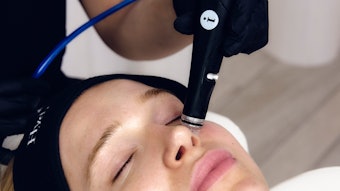Proteins and peptides play an important role in the skin health, not only as cutaneous structural components such as collagens, elastin, keratin, fibronectin, integrins and laminin, but also as inhibitors (proteases), stimulating agents (growth factors such as TGF-beta) or regulators (protein kinase C or interleukin IL-1) of biochemical processes in the skin. Small peptides often are responsible for a biochemical effect—they are either released from larger units by proteolysis or they exert their effect as a partial sequence of a protein due to a conformational change.
Probably the best known example of a tripeptide released by proteolysis after tissue or skin injury is H-Gly-His-Lys-OH (GHK). This tripeptide binds copper (II) ions as a ligand and accelerates wound healing as a copper complex. The synthetic copper peptide is marketed as a cosmetic active ingredient.
The carboxy terminal tripeptide Lys-Pro-Val-OH (KPV) of the alpha-melanocyte-stimulating hormones (alpha-MSH) is described as the shortest sequence that is responsible for the anti-inflammatory effect of alpha-MSH. As can be seen from the different published patent applications, the cosmetic industry is attempting to develop active ingredients by optimizing the structure of the KPV tripeptide to promote epidermal renewal, improve the skin barrier function, or prevent cutaneous inflammation.
Thrombospondin-1 (TSP), a high molecular weight glycoprotein, contains a tripeptide sequence -Arg-Phe-Lys- (RFK) that is essential for activating the transforming growth factor beta (TGF-beta). TGF-beta is a multifunctional cytokine that regulates cell proliferation and differentiation, tissue remodelling and repair, thus inducing the synthesis of extracellular matrix proteins. Based on this knowledge, an active ingredient for reducing age-related and photo-induced wrinkles was successfully developed.









![Lead Image2 [nas] 800x450px](https://img.cosmeticsandtoiletries.com/files/base/allured/all/image/2024/10/Lead_image2__NAS__800x450px.6704042d635b8.png?auto=format%2Ccompress&fit=crop&h=191&q=70&w=340)
